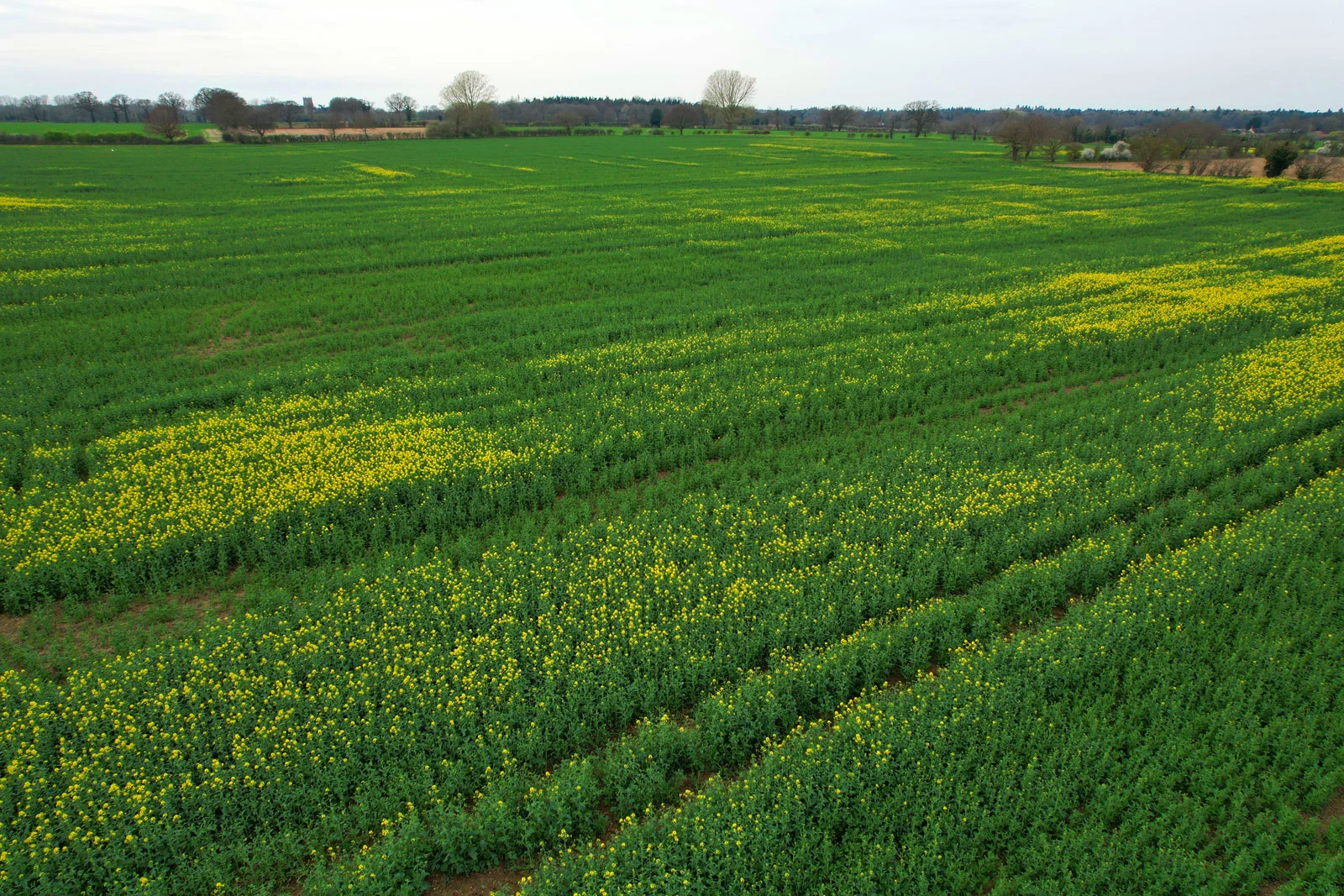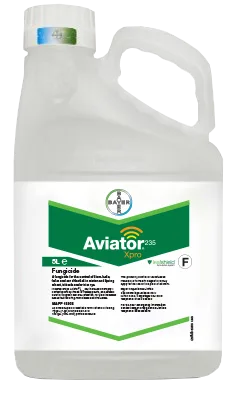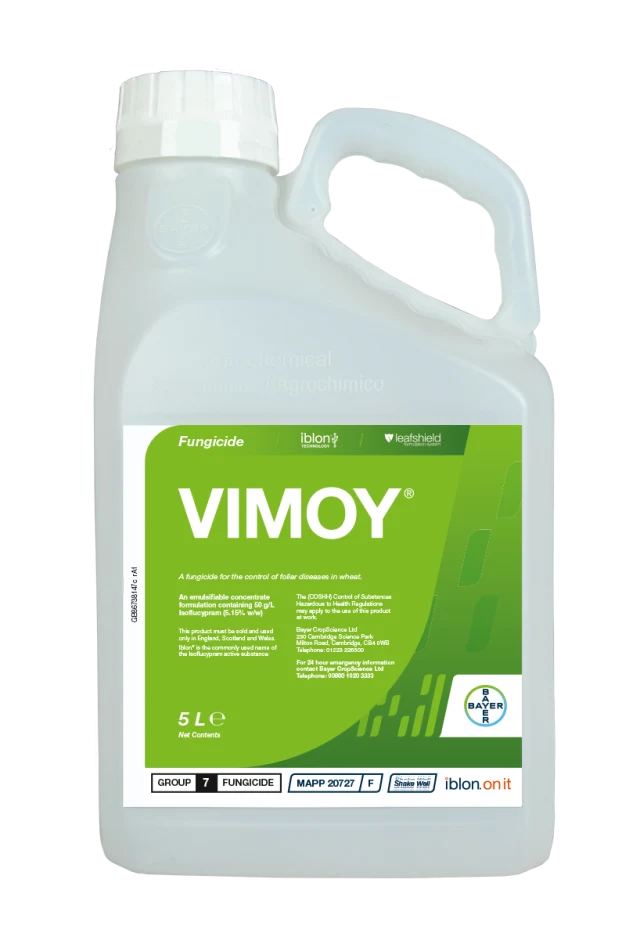Published on 28th March 2025
Local Insights
Weed and disease control advice for Scottish growers in April

Current situation (17 March 2025)
Some growers have made a start to spring barley drilling in decent March weather, although soils are still relatively cold. It’s also a bit on the dry side – although that could have changed by the time you read this – we haven’t had any decent rain for nearly a month as I write. Some spring barley drilling is happening, I suspect, for workload reasons as much as conditions.
Cereals are being rolled to help encourage tillering, while most winter crops have had P&K fertilisers applied, and some nitrogen as well, as long as deliveries have arrived.
Winter crops, even winter barley which usually by this stage can be very yellow and hungry, are generally looking well – it’s probably the best start to a year for a number of years.
Finish off any remaining herbicide applications
Most autumn crops received a pre-emergence or early post-emergence herbicide, which feedback suggests has worked effectively probably reducing the need for a tidy up this spring.
Where it is required, some will have had herbicide applied during March, but any remaining crops should be a priority in April.
If you have fields with bromes and broadleaf weeds Pacifica® Plus is a good fit with the amidosulfuron adding some extra broadleaf weeds to the spectrum controlled, as well as doing the grassweeds.
Where it is just annual meadowgrass and broadleaf weeds, then Othello® or Hamlet® will probably be the option, unless you have one of the ‘Met’ products in store and the crop has yet to reach GS25, where they could be an option.
If you’re applying a mesosulfuron-containing product, don’t apply before a frost. You’re ideally looking for stable temperatures without any huge fluctuations between day and night for a few days before and after application to minimise risk of crop damage. It’s also worth letting rolled crops recover for a 7-10 days before applying herbicides.
Protection and timing the key to wheat disease control
Septoria and yellow rust will likely be the main disease threats in wheat crops in Scotland.
Last year there were around three full infection cycles of Septoria in crops, and four to five of yellow rust, and just because it’s not showing visible symptoms doesn’t mean it’s not there. Timing and disease protection are therefore the keys for effective disease control. Use the best products that your budget will allow, which will help with green leaf area retention as well as disease control and ultimately yield.
T0 sprays can be a multitude of things: just manganese, a growth regulator or a fungicide, typically for yellow rust, with tebuconazole a popular choice.
T1s in southern Scotland could be towards the end of April, with the bulk likely to be in May, depending on the weather.
Options include Vimoy® plus a partner, which probably fits best on those early drilled forward crops carrying higher levels of disease, or ones with high yield potential. On later sown crops with lower yield potential then Ascra® Xpro® will do a very cost-effective job.
Tiller retention crucial for winter barley yields
The GS30/31 spray is more important than the later T2 spray in winter barley. Any disease around this time can cause plants to abort tillers, and tiller retention is crucial for maximising yields.
Products that control a broad selection of the key diseases – Rhynchosporium, net blotch, brown rust and mildew – such as Ascra® Xpro® at 0.9 L/ha are the best way to approach T1. You can only use Ascra® Xpro® once in the crop, and this would be my first-choice timing.
Keep an eye on light leaf spot in oilseed rape
Oilseed rape has started to grow away – in the first part of the month keep an eye on light leaf spot infections, which might need treating to prevent it from moving up the plant as it grows.
In southern Scotland, crops might reach early to mid-flowering by the end of the month, when Sclerotinia also becomes a risk. Aviator® Xpro® containing the SDHI, bixafen and azole prothioconazole provides two modes of action against both diseases.
Protection from Aviator® Xpro® lasts around three weeks, so if you think you’re likely to apply two flowering sprays, I suggest 0.8 L/ha for the initial application followed by 0.5 L/ha. If it’s a one-hit, use the full 1.0 L/ha, and make sure timing is spot on, just before petal fall.
Remember if it stays dry during flowering that doesn’t necessarily mean Sclerotinia won’t be about – warm and humid weather, plus the inoculum and a flowering crop are the three main risk factors. Field history and neighbouring crops, not necessarily oilseed rape, that can carry Sclerotinia infections also need to be considered when assessing risk.
Early weed control in potatoes is best
Try to get weed control in potatoes done, with the possible exception of a graminicide, before the crop emerges. Plant the crop and keep an eye on emergence. The ideal is for the drills to be formed and planted, some moisture to allow the ridges to green up to go in with the contact and residual herbicide at the same time.
If you’re using Emerger®, remember it must be applied at least seven days before the crop emerges, so you have to pay attention to fields. Soil type will play a factor – lighter ground warms up more quickly so emergence will be faster.
Tank mixing Emerger® and Artist® on varieties able to tolerate metribuzin is a mix to consider. Emerger® gives a good base level of weed control, to which Artist® helps with extra grassweed activity in particular. Alternative tank mix partners for Emerger® could be Sencorex® or Praxim®.
----
Artist® contains flufenact and metribuzin. Ascra® Xpro® contains bixafen, fluopyram and prothioconazole. Aviator® Xpro® contains bixafen and prothioconazole. Emerger® contains aclonifen. Hamlet® and Othello® contain diflufenican, iodosulfuron-methyl-sodium and mesosulfuron-methyl. Pacifica® Plus contains amidosulfuron, iodosulfuron-methyl-sodium and mesosulfuron-methyl. Praxim® contains metobromuron. Sencorex® contains metribuzin. Vimoy® contains isoflucypram.
Artist®, Ascra®, Aviator®, Emerger®, Hamlet®, Pacifica®, Othello®, Sencorex®, Vimoy® and Xpro® are registered Trademarks of Bayer. All other brand names used are Trademarks of other manufacturers in which proprietary rights may exist. Use plant protection products safely. Always read the label and product information before use. Pay attention to the risk indications and follow the safety precautions on the label. For further information, including contact details, visit www.cropscience.bayer.co.uk or call 0808 1969522. © Bayer CropScience Limited 2025








